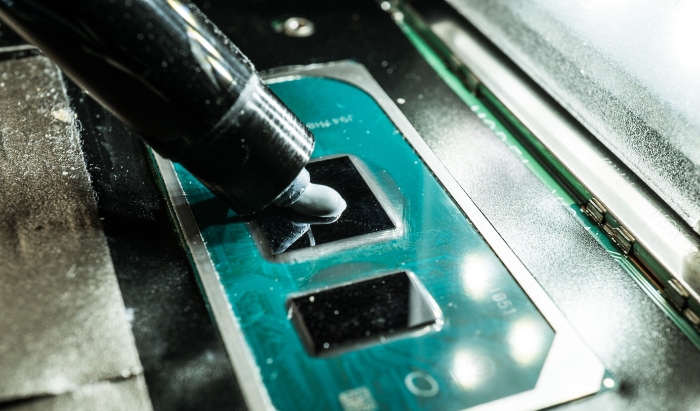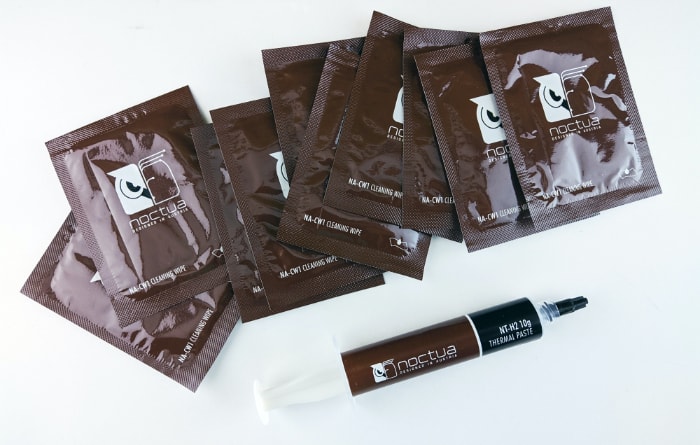Does Thermal Paste Expire? Beyond the Heat Sink

When it comes to maximizing the performance and longevity of your computer, particularly high-performance desktops or gaming PCs, one small but vital component comes to the fore: thermal paste.
This seemingly insignificant compound plays a pivotal role in maintaining the optimal operating temperature of your computer's processor. However, as is true with any product, questions about its shelf-life naturally arise. A common question that many computer enthusiasts and professionals alike ask is, “Does thermal paste expire?”
In this blog post, we will dig deep into understanding what thermal paste is, its function, and the vital role it plays in the world of computing. We will then turn our attention to the heart of our discussion – whether or not thermal paste can expire.
Understanding Thermal Paste Shelf-Life
In order to fully grasp whether or not thermal paste can expire, it's essential to first comprehend what we mean by ‘shelf-life' in this context.
Defining Shelf-Life in the Context of Thermal Paste
The term ‘shelf-life' typically refers to the period during which a product maintains its usability under specified conditions.
When applied to thermal paste, shelf-life denotes the duration for which the paste will retain its optimal thermal conductivity properties when stored correctly. This is a crucial factor as a decrease in these properties could lead to subpar cooling performance.
Factors Affecting the Shelf-Life of Thermal Paste
Several factors can influence the shelf-life of thermal paste, including:
Composition: The specific materials used to manufacture the thermal paste can affect its longevity. For instance, some pastes that use metal or ceramic particles may have different shelf-lives than those using silicone or other compounds.
Packaging: The way thermal paste is stored and packaged at the point of sale can also play a significant role in its shelf-life. Sealed tubes or syringes can help prevent exposure to air, reducing the risk of the paste drying out.
Manufacturer's Specifications: Different manufacturers may provide different shelf-life estimates for their products based on their specific formulations and quality controls.
The Role of Storage Conditions in Determining Longevity
Apart from the factors intrinsic to the paste itself, external storage conditions can greatly impact the shelf-life of thermal paste. Key considerations include:
Temperature: Ideally, thermal paste should be stored in a cool, dry place to preserve its properties. Excessive heat could cause the paste to degrade faster.
Humidity: Exposure to high levels of humidity can also affect thermal paste, potentially leading to faster degradation.
Air Exposure: As mentioned earlier, exposure to air can cause thermal paste to dry out. Therefore, it's essential to ensure that any unused paste is properly sealed after each use.
Does Thermal Paste Expire?
This question may seem straightforward, but the answer requires a deeper understanding of the nature of thermal paste and its role in computer hardware.
The Reality of Thermal Paste Expiration
In theory, and in practice, thermal paste can indeed expire. Like many products, the lifespan of thermal paste is dictated not only by the inherent properties of the paste itself but also by how it is stored and maintained.
Over time, exposure to various environmental factors can degrade the components of thermal paste. The compounds can begin to separate or dry out, causing the paste to lose its effectiveness in transferring heat.
Backing Up the Claim: Studies and Sources
Numerous studies and expert opinions support this claim. Manufacturers usually provide a shelf-life estimate for their products, commonly around 3 to 5 years. However, this can vary based on the factors we discussed in the previous section.
One notable study conducted by a renowned computer hardware review site tested several brands of thermal paste over different periods. The findings supported the expiration concept, showing that pastes could indeed degrade and lose effectiveness over time.
Recognizing Expired Thermal Paste: The Tell-Tale Signs
While there may not be a hard and fast rule to determine if thermal paste has expired, there are a few tell-tale signs to look out for:
Consistency Change: If the thermal paste has become hard, overly thick, or dried out, this could be a sign that it has expired.
Separation: Some thermal pastes may show signs of separation, with a clear liquid forming at the top. This indicates that the paste has started to degrade and should not be used.
Poor Performance: If your CPU or GPU is overheating despite having sufficient cooling and proper ventilation, old or expired thermal paste could be a culprit. This would necessitate the reapplication of fresh thermal paste.
What Happens If You Use Expired Thermal Paste?

Should you find yourself using expired thermal paste, you might wonder what the ramifications might be. In this section, we'll address the potential problems that could arise from using thermal paste past its prime.
Potential Issues with Using Expired Thermal Paste
The purpose of thermal paste is to facilitate efficient heat transfer from the CPU or GPU to the cooler. When thermal paste expires, it loses its ability to perform this function effectively, leading to a number of issues:
Overheating: The most immediate concern would be an increase in the operating temperatures of your CPU or GPU. This could cause your system to throttle its performance in order to prevent damage, leading to noticeable slowdowns.
System Instability: Prolonged overheating can lead to system instability. You may start experiencing unexpected shutdowns, blue screens, or random reboots.
Hardware Damage: In extreme cases, continuous overheating could potentially cause damage to your components, leading to costly repairs or replacements.
Expert Opinions on the Effects of Expired Thermal Paste
Experts in the field echo these concerns, often advising against the use of expired thermal paste. A number of technical review sites and hardware forums have conducted tests that show a noticeable increase in operating temperatures when expired thermal paste is used, further reinforcing the potential risks.
Is It Worth the Risk?
Considering the potential issues associated with using expired thermal paste, it becomes clear that it's generally not worth the risk. Given that the cost of thermal paste is relatively low compared to the cost of the components it protects, it's a wise investment to replace expired thermal paste with a fresh application.
How to Properly Store Thermal Paste to Maximize Shelf Life
Proper storage is crucial when it comes to maximizing the shelf life of thermal paste. Let's discuss some practical tips and suggestions that can help extend the usable life of this vital component.
Ideal Storage Conditions for Thermal Paste
Cool Environment: Keep your thermal paste in a cool environment. Extreme temperatures, especially heat, can cause the paste to dry out or degrade faster.
Away from Sunlight: Sunlight, specifically its ultraviolet radiation, can degrade the thermal paste over time. Therefore, store your thermal paste in a dark place.
Dry Area: Humidity can also negatively affect the shelf life of thermal paste. Always store it in a dry location to prevent moisture-related degradation.
Proper Handling and Storage Practices
Tight Sealing: After using thermal paste, ensure that you tightly seal the container. This will minimize exposure to air, which can cause the paste to dry out.
Avoid Contamination: Try not to touch the paste directly with your fingers or any other material that might contaminate it. Contaminants can affect the thermal conductivity of the paste.
Original Packaging: It's generally recommended to keep the thermal paste in its original packaging, as this is designed to protect the product and maintain its integrity over time.
Regular Checks
Periodically check your thermal paste to ensure it remains in good condition. Look for signs of drying out or separation. If you notice any of these signs, it might be time to replace the paste.
Conclusion
Understanding the lifespan of thermal paste and the role it plays in the efficient functioning of your computer hardware is of paramount importance. As we've learned, thermal paste, like many other products, does indeed have a shelf life and can expire. The degradation of thermal paste over time can lead to a decline in its ability to conduct heat, potentially resulting in a range of problems, from system instability to hardware damage.
The shelf life of thermal paste, however, is not a fixed figure and can be significantly influenced by a variety of factors including its composition, storage conditions, and exposure to environmental factors. By implementing good storage practices, such as keeping the paste in a cool, dry place and tightly sealed when not in use, we can maximize its shelf life.
Moreover, being vigilant about the signs of expired thermal paste can save us from unnecessary hassle. If you notice changes in consistency, signs of separation, or worsening system performance, it might be time to apply a fresh layer of thermal paste.
In conclusion, while the question “Does thermal paste expire?” is a valid one, it should also prompt us to ask how we can best maintain this essential component of our computer systems. After all, the key to maximizing performance and longevity in our computers often lies in understanding and effectively managing even the smallest details.
We hope that this discussion has provided you with valuable insights and practical advice on handling and understanding the lifespan of thermal paste. By keeping these pointers in mind, you can ensure optimal performance from your computer and a longer, more efficient life for your hardware components.


